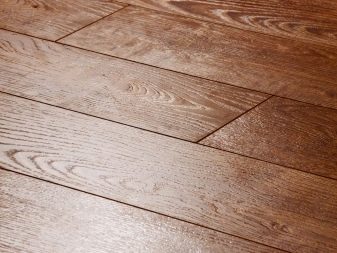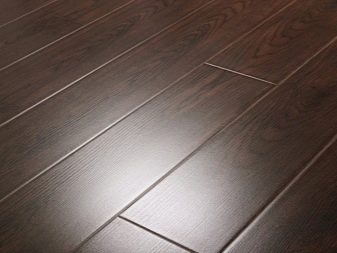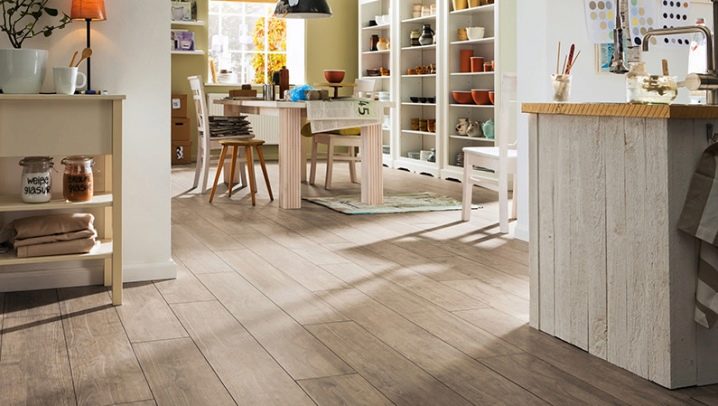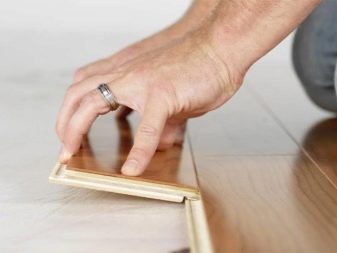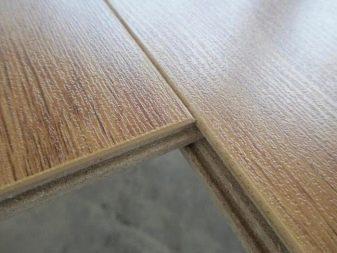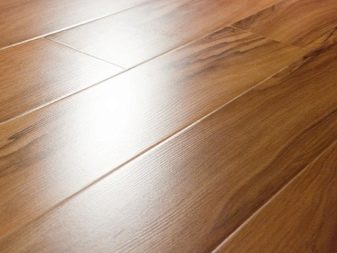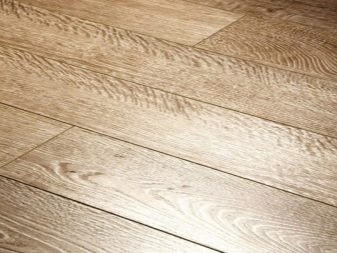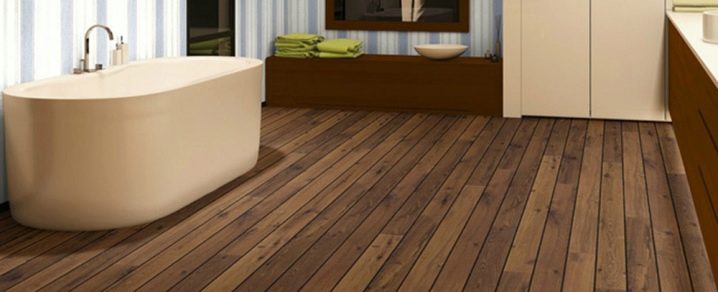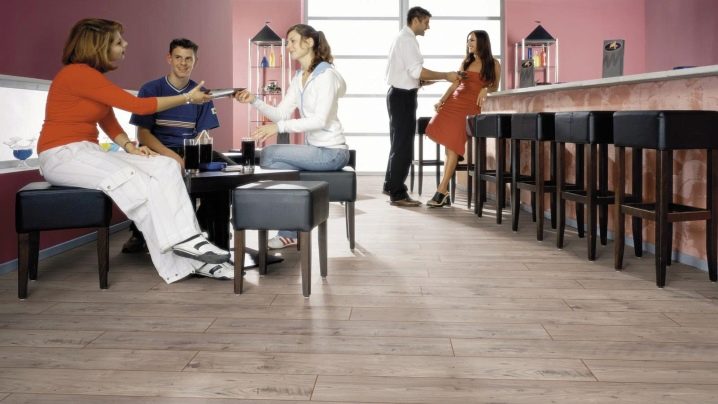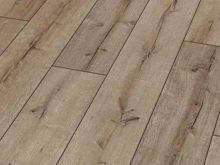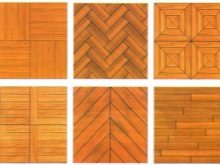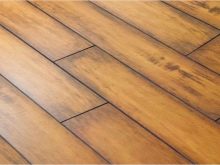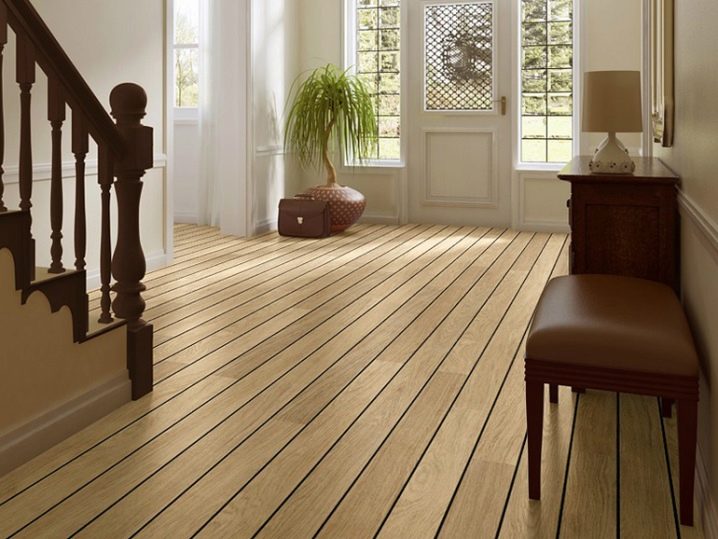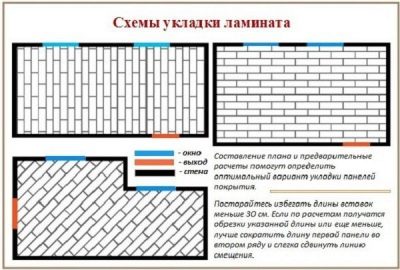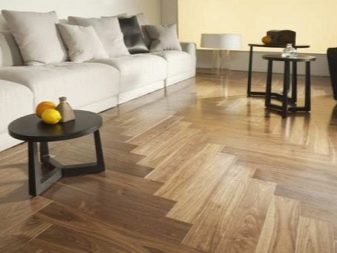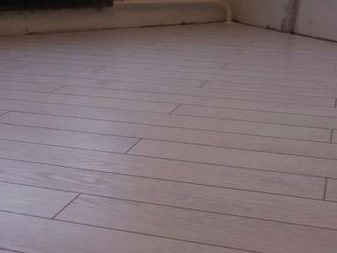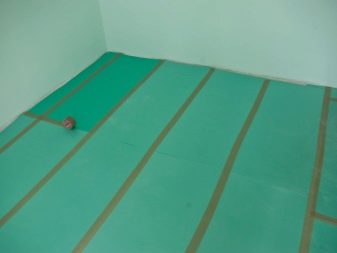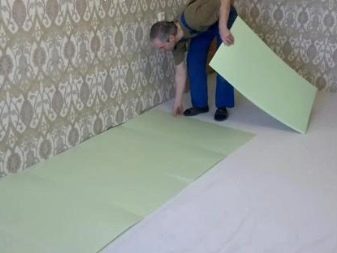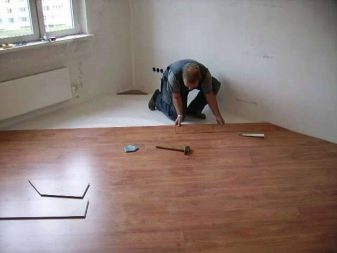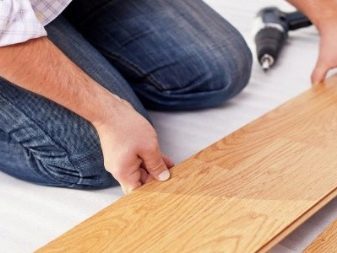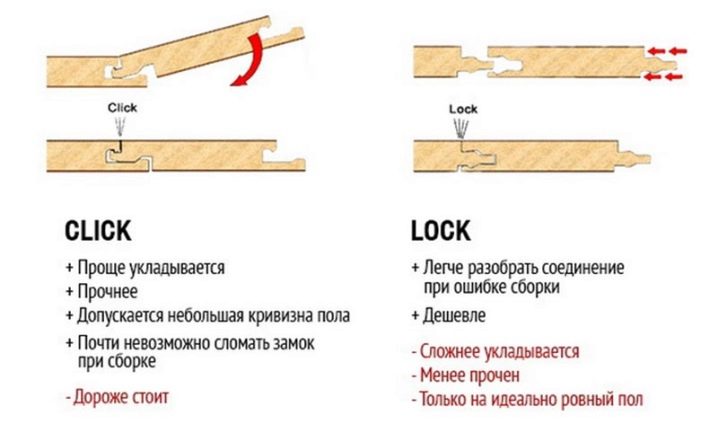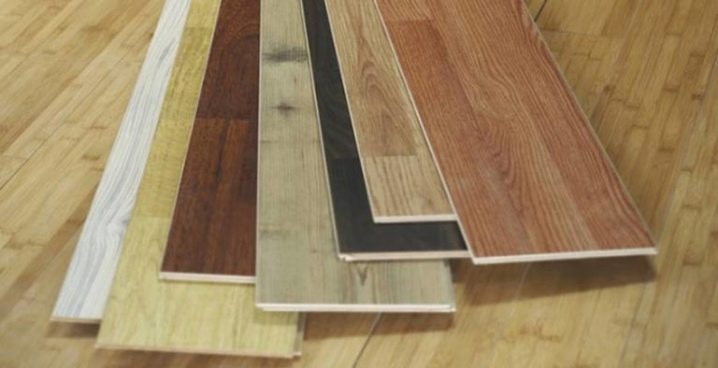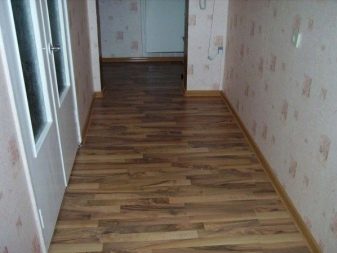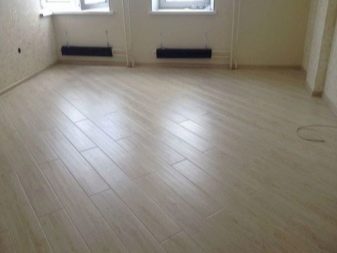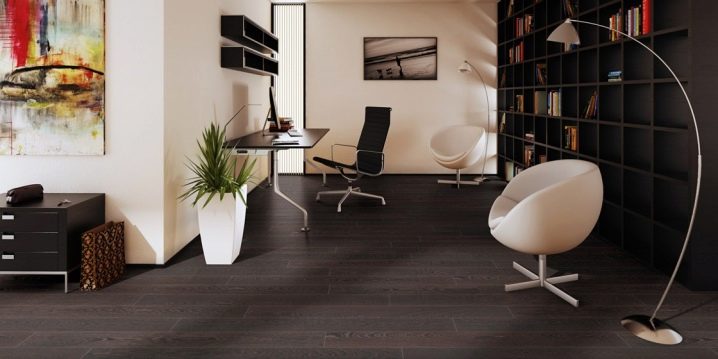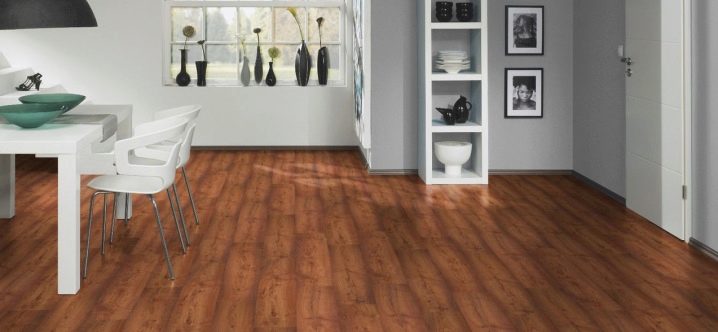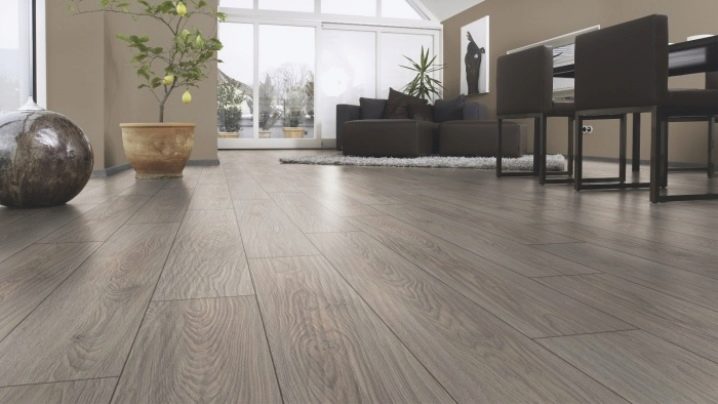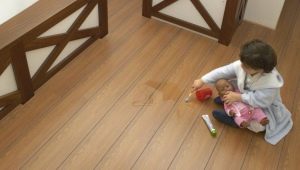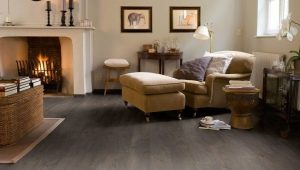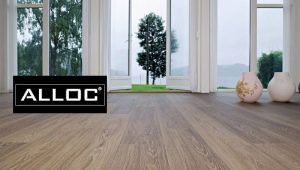Laying laminate with a facet: methods and examples in the interior

Laminate flooring has become a popular flooring thanks to its simple installation method. Another reason for the popularity of coverage can be called a wide selection of color and texture solutions. Laminates of a laminate are presented in the form of the pressed wood-fiber plates connected to several layers of paper. Often, for a more aesthetic appearance, the paper layer is covered with a pattern imitating wood. For the resistance of the coating to various external influences, an acrylic or melamine resin is applied with the top layer.
Special features
The difference between the laminate with a facet from the classic, with straight edges, is not only the appearance, but also performance. Laminate with a facet serves a decorative purpose in the interior in order to imitate the floor of natural wood.
Chamfering
Choosing a laminate, you need to consider the operating parameters, design features, as well as the type of chamfer itself. Nowadays, there is a large selection of laminate with a chamfer. There are panels of different shapes, sizes, depths of cut.
There are two-faceted and four-faceted laminate. For panels with two chamfers, only opposite edges are bevelled, and four-faceted lamellas are processed along the entire perimeter. In terms of functionality, they do not differ. However, a universal laminate suitable for any room, regardless of its parameters, is considered to be four-faceted.
Also, when using this type of laminate, the unevenness of the concrete surface is smoothed and the floor load is reduced.
There are various types of sections of the corners of plates - straight (V shaped) and figured (U shaped).
Laminates of laminate can be painted or laminated. The first type is more wear resistant. The latter are more attractive in appearance, but at the same time, the price for them is higher than for a colored laminate.
According to the manufacturing technology, the figured chamfer obtained by means of ground milling differs, and the rolled chamfer, which is extruded on the panel when it is rolled between rollers.
Advantages and disadvantages
There are many positive aspects to laminate with a bevel, even though some people do not trust such a floor covering.
Chamfer hides the resulting defects and visually preserves the original appearance of the floor as long as possible. The cuts are processed at the production stage, so irregularities at the cut points will be less noticeable than, for example, on traditional low-quality laminate panels.
Due to its structure and mounting method, a chamfer can act as a shock absorber, which can reduce the load on the coating.
This property becomes the most valuable when using laminate of the 32nd class, which is used in places designed for a large number of visitors.
One of the minuses of a laminate with a facet is the difficulty in cleaning it. Laminate light shades are especially difficult to clean from the pollution formed between the panels and spoil the appearance of the coating. But if, during the cleaning of the laminate with a chamfer, the first thing to do is to vacuum it and then do a wet cleaning, the dirt will not accumulate in the joints, and the floor will remain clean longer.
Styling options
Laminate with a chamfer is laid in the same ways as a regular laminated floor. Lamellae are located along the premises, across, diagonally, artistically (herringbone, diamonds, and so on). The choice of method varies depending on the characteristics of the room or the type of interior.
Visually expand the space in the room will help the panel with a chamfer, laid across the room or square boards.
Experts recognize that the most practical option is laying along a long wall; this option is also capable of making the room visually longer. But regardless of the way they are laid, spectacularity is given by a combination of different panel shapes and contrasting colors.
There are two universal options for laying laminate with a bevel: in a straight line and diagonally. Laying laminate in a straight line (along the wall), you should consider the placement of the light source in the room. Usually the lamellas are laid perpendicular to the wall with a window opening, then the light will fall in the direction of the long joints, and the boards will become less noticeable. This rule applies to double-sided laminate. Lamels with a chamfer made from all four sides, make it possible to choose any method of laying.
The advantage is the method of laying, which will help save material and time to cut. Diagonal installation is considered difficult, since more waste is generated, but in the end the flooring has a more effective look. Such packing is usually used in square-shaped rooms.
Installation
Before laying the laminate with a chamfer, the surface of the concrete floor is necessarily prepared. Most often, the preparation of laying lamellae of thick laminate takes more time than the installation itself. At the preparatory stage, you need to remove all the irregularities formed by improper concreting of the base.
The next stage is the laying of the lining fabric. Insulation against noise and moisture penetration is laid. On the prepared surface polyethylene film spreads. It is better if it is a solid piece that can save from leakage.. If the film spreads in several pieces, then it should be laid with an overlap of 15-20 cm and, preferably, glued together with tape.
It is worth remembering that the substrate should not be thick, so that heavy furniture does not push through the floor.
At the level of the laminate to be laid, wooden wedges are inserted into the wall.Such a maneuver is needed in order to create a small air space between the wall and the coating, which will not allow the laminate to warp when changing seasons.
As a rule, lay laminate begin from the far corner. The first panel should be put protrusion to the wall, and the groove to the next row. This is done in order to properly close the next row.
To evenly distribute the load on the floor, the laminate is laid according to the type of brickwork. Therefore, the first panel of the second row is cut in half.
At the joints of the panel must be lubricated with glue. Handle glue need only the lower part of the castle and in moderation. Otherwise, the adhesive composition may act in the crevices of the panels, which will spoil the aesthetic appearance. After the lamellas docked, the chamfer should be gently wiped with a brush or brush.
When choosing laminate coating panels, you should consider the types of connections. Lock type Lock - the most common. In this locking connection, the panels are inserted horizontally into each other and are fitted with a rubber hammer and bar.
More reliable and modern is considered the castle system Clik. With this system, the panels are inserted into each other at an angle of 25-45 degrees, snap into place and placed on the floor. With such a lock, the chamfer facilitates the installation of a laminate coating.
The remaining lamellae are stacked in the same way, only tamping the last panels in the row will not be easy, as there is not enough space for tamping.
The technology of laying laminate with their own hands, see the following video.
Use in the interior
Every year a laminate covering with a facet becomes more popular, which encourages manufacturers to create different collections. There is a gray laminate with a facet; wenge laminate, which has already become traditional; the same laminate can be vinyl and gloss. In the domestic market of building materials there is a large selection of lamellas with a surface that simulates hand scraping. This laminate is used in the interiors of medieval styles.
The choice of laminate coating depends on the characteristics of the place where this coating is intended to be used. Wenge laminate is ideal for a bright room. In the room darker will look great laminated oak "bleached", which has a reflective property.In the hallway it is undesirable to use a surface with a glossy finish, because frequent contact with sand and dirt can spoil it.
Before the purchase should think about the way of laying, because it affects how many panels you need. For example, for complex curly layouts you should not use single-band collections.
If the room is long and narrow, then its proportions are easily corrected by means of direct masonry of the product with a chamfer laid perpendicular to the long wall. You can lay laminate diagonally in rooms with a non-standard shape, and this method also emphasizes zoning. "Christmas tree" or squares lay laminate to create the illusion of parquet, but here you need to use special panels with small slats and special locks for coupling at a right angle.
The Victorian style in the interior of the cabinet will complement the laminate in the color of wenge or merbau, and the brushed panels will add more color and solidity to the interior.
For the interior of the living room a brushed four-facet version will harmoniously fit.
Laminated flooring with a facet is distinguished by its practicality and beauty.This floor fits perfectly into the interior of a fashionable hotel, a solid cottage or a restaurant.
Laying this flooring material is not at all difficult. Variations can be very diverse, and you have the right to choose according to your taste, or based on any proposed example.
Today the most popular patterns are laying horizontally and deck variation.
